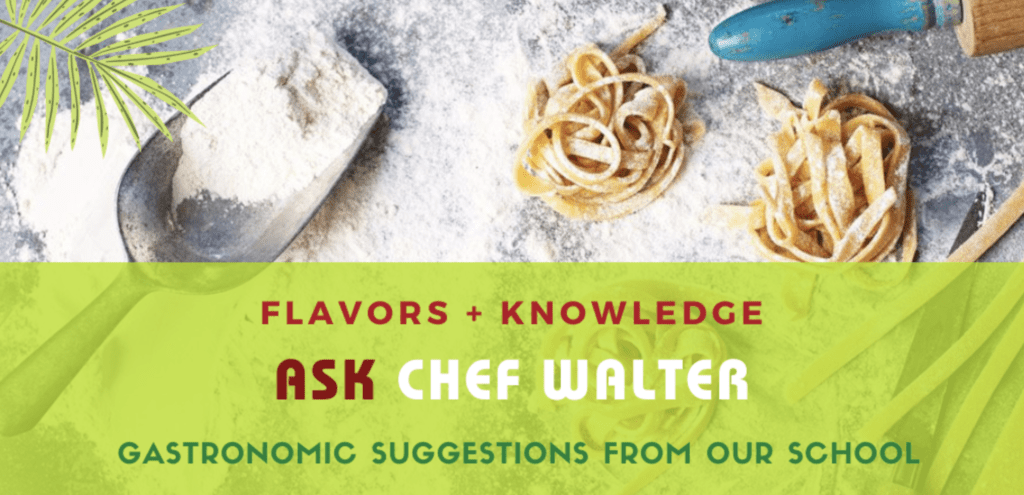Search Posts
Recent Posts
- Out and About in RI: Former Pawtucket Mayor Henry Kinch Tribute in Photos June 24, 2025
- Rhode Island Weather Forecast for January 24, 2025 – Jack Donnelly June 24, 2025
- ART! Mark Freedman, first featured artist of Summer Art Shows at Charlestown Gallery June 24, 2025
- The Bellevue Hotel: Procaccianti Co. New Luxury Boutique Hotel Set for Newport’s Iconic Bellevue Ave June 24, 2025
- Mike Stenhouse, CEO of RI Center for Freedom & Prosperity, named into College Baseball Hall of Fame June 24, 2025
Categories
Subscribe!
Thanks for subscribing! Please check your email for further instructions.
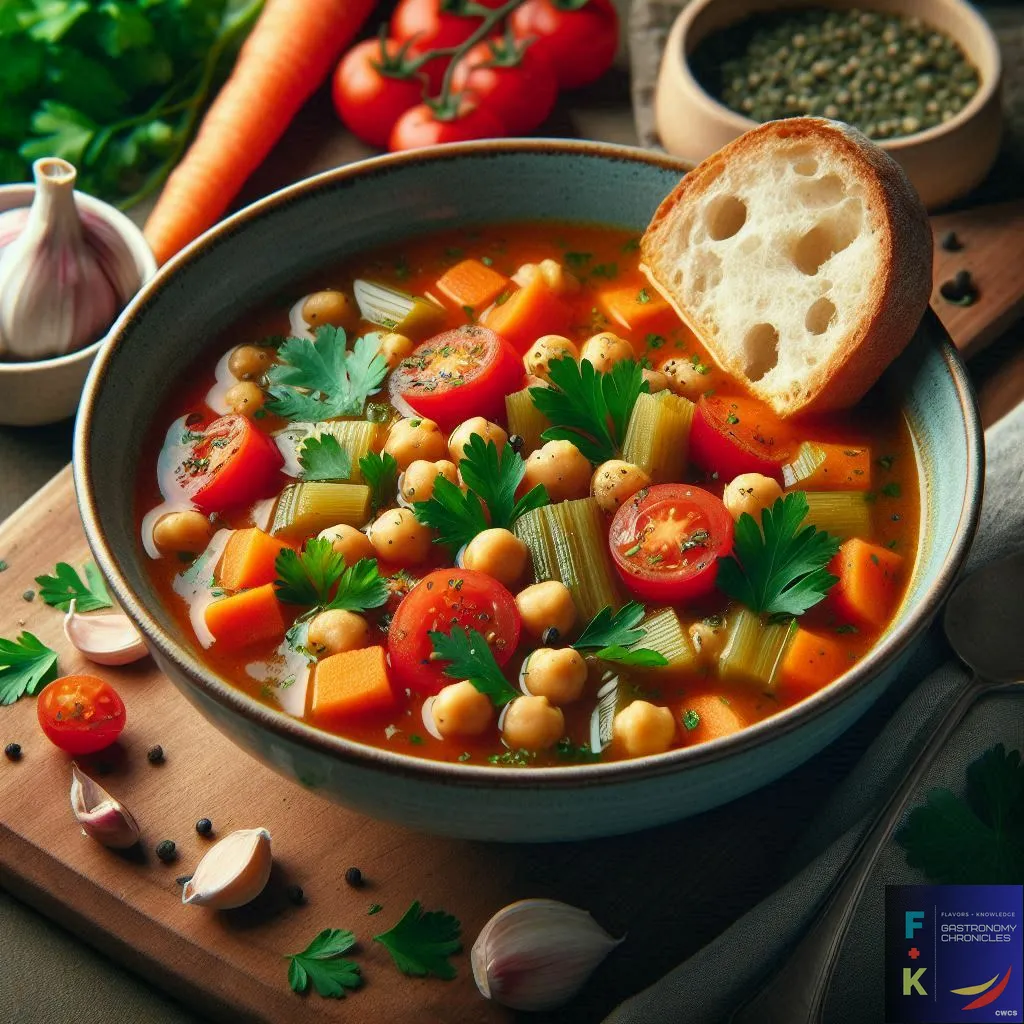
Ask Chef Walter: Chickpeas, savory and sweet – Walter Potenza
by Executive Chef Walter Potenza, contributing writer
Friends:
Around the holidays, many Italian regions take advantage of chickpeas for their savory and sweet dishes. In this overview, there are some interesting details about this ancient legume and a recipe for the Sicilian Panelle.
Chickpeas, commonly known as garbanzo beans, have been cultivated for over a millennium and are still one of the most crucial foods in various cuisines worldwide. Combining nutritional value with diverse recipes and historical importance, this is the real gastronomic treasure. First domesticated somewhere in the Middle East, the Mediterranean, or beyond, chickpeas are infinitely more than a humble legume-they represent thousands of years of agricultural development and cultural tradition and a reliable source of sustenance.
History and Cultural Significance
Chickpeas have a deep history; their cultivation dates back over 7,500 years to the Neolithic period, as evidenced by archaeological findings in the Fertile Crescent. The remains of chickpeas have been found in the Middle East, forming part of the diet of the ancient Egyptians and Mesopotamians. While Romans liked chickpeas as nutrition and medicine, the great philosopher Pliny the Elder claimed they had healing powers. Also, their value was very high because they could fit any climate and, therefore, could spread so fast across Europe, North Africa, and Asia, where, in their diets, they became a stable element.
By the 17th century, Spanish and Portuguese explorers had brought chickpeas to the Americas. Since then, they have become an important crop, adapted to tropical and temperate climates. Today, chickpeas are the centerpiece of many iconic dishes, be it Middle Eastern hummus, Indian chana masala, or Italian pasta e ceci.
Nutritional Powerhouse: Protein, Fiber, and Essential Nutrients
One of the staple reasons chickpeas are prized for their nutritional value worldwide is because they have an excellent nutrient profile. First, they are one of the highest plant-based protein sources and are valuable in vegetarian and vegan diets. One serving of a cup of chickpeas contains about 15 grams of protein, thus being highly suitable to substitute meat for those who seek to raise their intake of plant-derived protein. In addition, chickpeas contain all nine essential amino acids, although they are somewhat low in methionine; this can be complemented by including grains in the diet.
Apart from protein, chickpeas also contain a good amount of dietary fiber, especially soluble fiber, which aids digestion and heart health by lowering LDL cholesterol levels. One cup of cooked chickpeas provides approximately 12 grams of fiber, covering nearly half the daily intake recommended for adults. This fiber content also helps maintain blood sugar levels, thus making chickpeas a favorable choice for diabetic individuals.
As a legume, chickpeas contain significant amounts of vitamins and minerals essential to general health. This is an excellent source of folate, iron, phosphorus, magnesium, and B vitamins. Folate is more critical for cell division, especially during pregnancy. Iron supports the production of red blood cells and helps individuals avoid fatigue, while magnesium and phosphorus are essential for the health of one’s bones and energy production. With such a rich profile of nutrients and a low glycemic index, this legume can be considered the food for health among all age groups.
Sustainability and Environmental Impact
Chickpeas are also a highly environmentally friendly legume, using less water than many other protein sources, and can grow in semi-arid conditions. They are among those nitrogen-fixing legumes in the soil to reduce the use of synthetic fertilizers, therefore promoting ecology-friendly agriculture. The eco-friendly profile has led to increased chickpea production globally, especially in regions where water scarcity is a factor. In addition, they are an excellent option for food security because they can handle climate change and pack a nutritional punch. Plus, as more people start enjoying plant-based diets, chickpeas are an affordable and eco-friendly protein source that’s easier on the planet than meat.
Surprisingly Versatile: From Snacks to Main Course
Chickpeas are incredibly versatile with their mild nutty flavor and firm texture. Whether dried, canned, or ground into flour, they are a staple in cuisines worldwide. In the Middle East, they are blended into creamy hummus and shaped into falafel, a popular street food originating in Egypt. In India, they feature in dishes like chana masala, while Italians use them in stews or grind them into flour for panelle, a Sicilian deep-fried snack. The French make socca, a savory chickpea flour pancake.
Roasted or unroasted chickpeas are also enjoyed as a snack, often spiced for added flavor. These crunchy bites offer a healthy, fiber–and protein-rich alternative to chips or crackers.
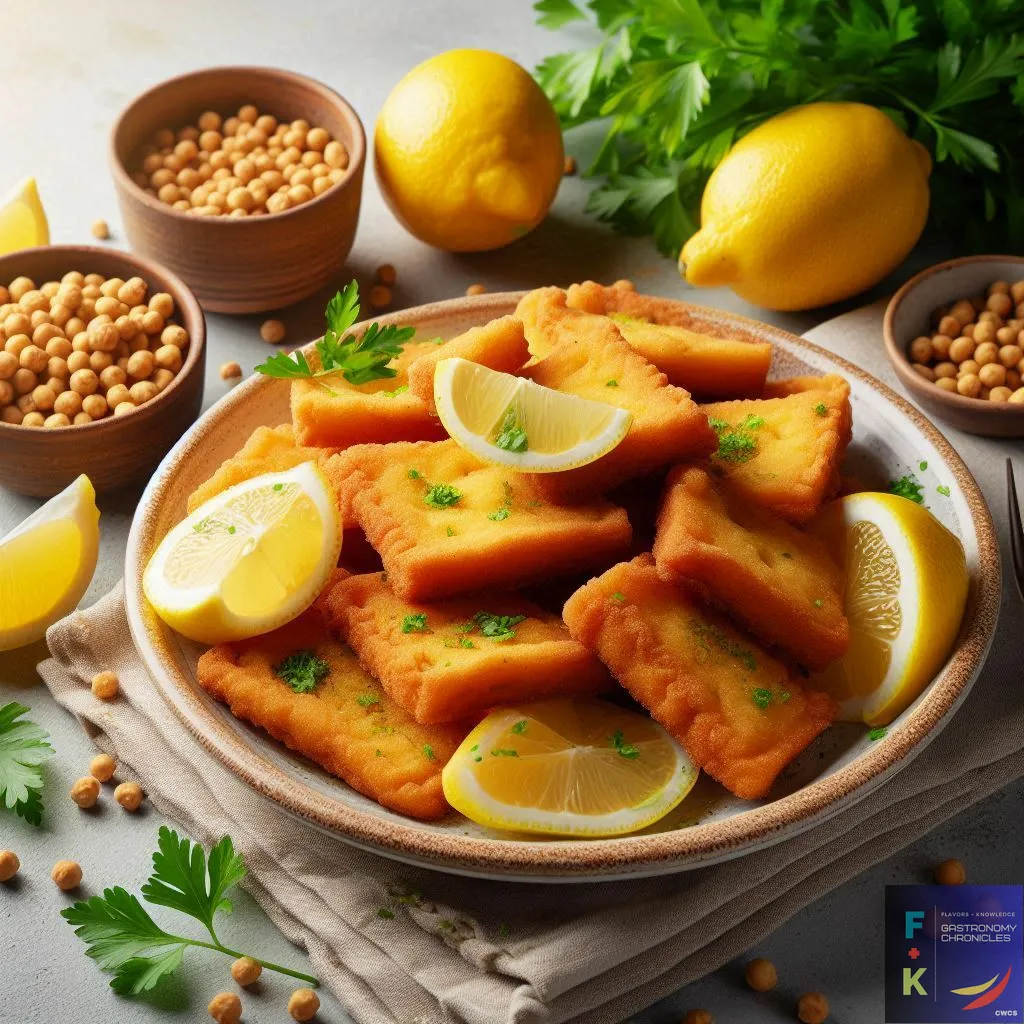
Sicilian Panelle How to make them.
10 Ways to use chickpeas suggestions by Meredith Hink, MS, RDN, CD
1. Roasted Chickpeas
Chickpeas can be seasoned and roasted for a tasty snack. Start by draining a #10 can of chickpeas. Mix chickpeas with 1/4 cup oil and toss with 1 1/3 ounces of your favorite seasoning mix (e.g., taco seasoning or herb mix). Spread out on two baking sheets lined or sprayed with non-stick spray. Bake at 350°F (conventional oven) for 45-50 minutes, stirring halfway through to prevent chickpeas from sticking. Serves about 20 – 1/2 cup portions.
2. Crab Cakes
This savory dish is an easy and affordable replacement for crab cakes. Combine one – 15 1/2 ounce can of garbanzo beans (reserve the liquid), 2 Tablespoons sliced green onions, 1 cup Panko breadcrumbs, 5 Tbsp reserved liquid from can, 3 Tablespoons tartar sauce or mayo, one teaspoon of Old Bay® seasoning (or a seafood seasoning), and one teaspoon dill weed. Scoop #16 scoops into a bowl of Panko crumbs. Place on a greased baking sheet and bake at 450°F for 12-15 minutes. Serve two patties each. Goes great with tartar sauce or a mustard-mayo dip.
3. Mock Tuna Salad
This “fishless” dish has the same texture as tuna salad, thanks to finely chopping garbanzo beans using a knife or a food processor. Combine one – 15 1/2 ounce can of garbanzo beans with 3 cups cooked pasta, 1 cup diced yellow onion, 1/2 cup diced celery, and 1 cup peas. Flavor with 2/3 cup mayonnaise, one teaspoon of Old Bay® seasoning (or a seafood seasoning), and 1/2 teaspoon dill weed. Serves 6 cups.
4. Lemony Chickpea Salad
This dish highlights several Mediterranean flavor profiles and pairs well with focaccia bread. Mix a 1/2 cup extra virgin olive oil marinade, 1/4 cup lemon juice, 1/2 teaspoon garlic, 1/4 teaspoon sea salt, and 1/4 teaspoon black pepper. Toss together two – 15 1/2 ounce cans of chickpeas, 3/4 cup of feta cheese, and 1 cup of chopped fresh spinach. Marinade for at least 4-5 hours. Serves one quart of salad.
5. Minestrone Soup
This is an excellent soup for using up leftover or seasonal vegetables. To make, prepare a 5/8 gallon of soup. Start with 1 quart of vegetable broth and 1 pint of water. Add one – 15 1/2 ounce can of garbanzo beans, 1 cup pasta (rotini, elbow, shell), and 4 cups of vegetables (canned, fresh, or frozen), and cook for 10 minutes on medium-high heat. Then add a 28-ounce can of diced tomatoes, season with your favorite seasoning (garlic, oregano, thyme, basil, bay leaves, salt, pepper), and cook for 10 minutes. Top with cheese if preferred.
6. Chickpea Blondie
Preheat oven (conventional) to 350°F. Drain and dry 1 – 15 1/2 ounce can of chickpeas; reserve water from the can. Mash chickpeas. Combine 2 cups brown sugar and 1/3 cup butter in a large saucepan. Add 1/3 cup mashed chickpeas, 6 Tablespoons bean water, 2 cups all-purpose flour, 1 teaspoon baking powder, and 1/4 teaspoon baking soda. Combine until smooth, then pour into a greased 13x9x2 pan. Bake 25-30 minutes. Slice into 18 pieces.
7. Chickpea Quesadillas
This plant-based version is an easy and flavorful alternative to quesadillas or other Mexican-flavored food on the menu. Drain one – 15 1/2 ounce can of chickpeas. Add to a food processor along with two teaspoons of taco seasoning and pulse until chickpeas are “chopped.” Heat one teaspoon of canola oil over medium heat in a saucepan and add 1 cup of chopped mushrooms. Then, add chickpeas and 1 cup of diced tomatoes. Heat until the mixture is warm. Use 1/3 cup of this mixture and 1/3 cup of shredded cheese per quesadilla. Serve with salsa and sour cream. Olé!
8. Chickpea Cookie Dough
Edible cookie dough has become all the rage but can be expensive if you purchase it ready-made. This recipe is flourless and easy to prepare. Soak 1/2 cup raisins in 1/2 cup warm water for 15 minutes and then drain. Drain and dry one – 15 1/2 ounce can of chickpeas. In a food processor, combine chickpeas, raisins, 3 Tablespoons of honey, one teaspoon of vanilla extract, and 1/2 teaspoon of ground cinnamon. Combine until thick and smooth. Stir in 1/4 cup mini chocolate chips. Yield is 7 – #16 scoop servings.
9. Chocolate Hummus
Although many people are familiar with the savory chickpea bean dip, a dessert version of this bean dip can also be produced by combining one – 15 1/2 ounce can of garbanzo beans, 4 Tablespoons cocoa powder, 2 Tablespoons vanilla creamer, and 1/4 cup of honey. This yields a little over 1 1/2 cups and is an excellent dip for apples, strawberries, and bananas.
10. Aquafaba
Don’t forget the aquafaba! Aquafaba, otherwise known as “bean water” or the water surrounding canned beans can be used in place of eggs in baked goods such as pancakes, waffles, and quick bread. Three tablespoons can replace one egg, and two tablespoons can replace one egg white.
Synopsis
Chickpeas aren’t just a trendy ingredient; they’re a crucial staple with great health benefits and tons of cooking versatility. With their unique taste and adaptability, chickpeas have been a go-to food for centuries. These little legumes are also resilient and good for the planet, which means they can help with personal health and global sustainability. Whether used in classic or modern dishes, chickpeas show how excellent, wholesome, and sustainable food can be.
www.chefwalterscookingschool.com
www.flavorsandknowledgetours.com
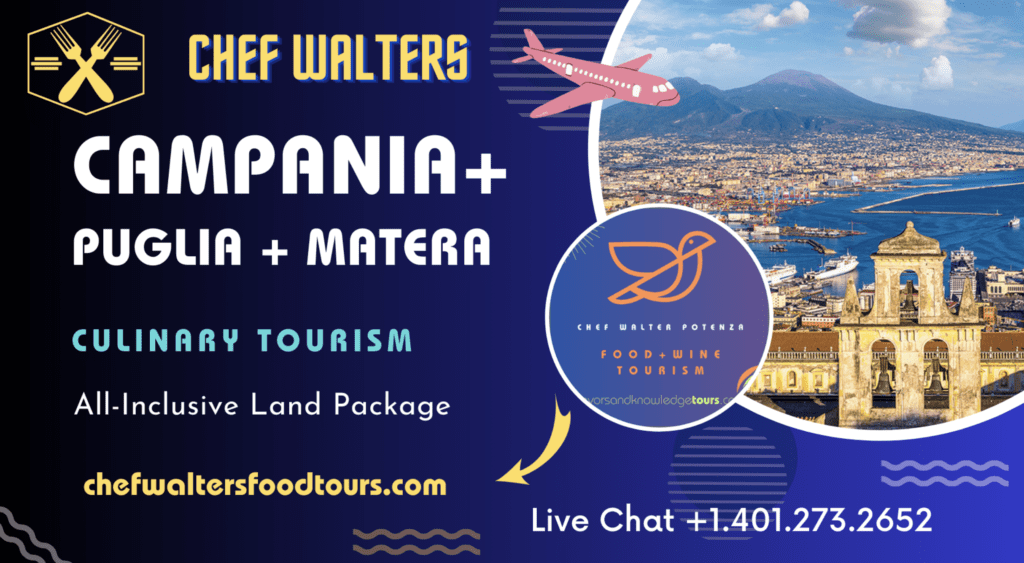
___
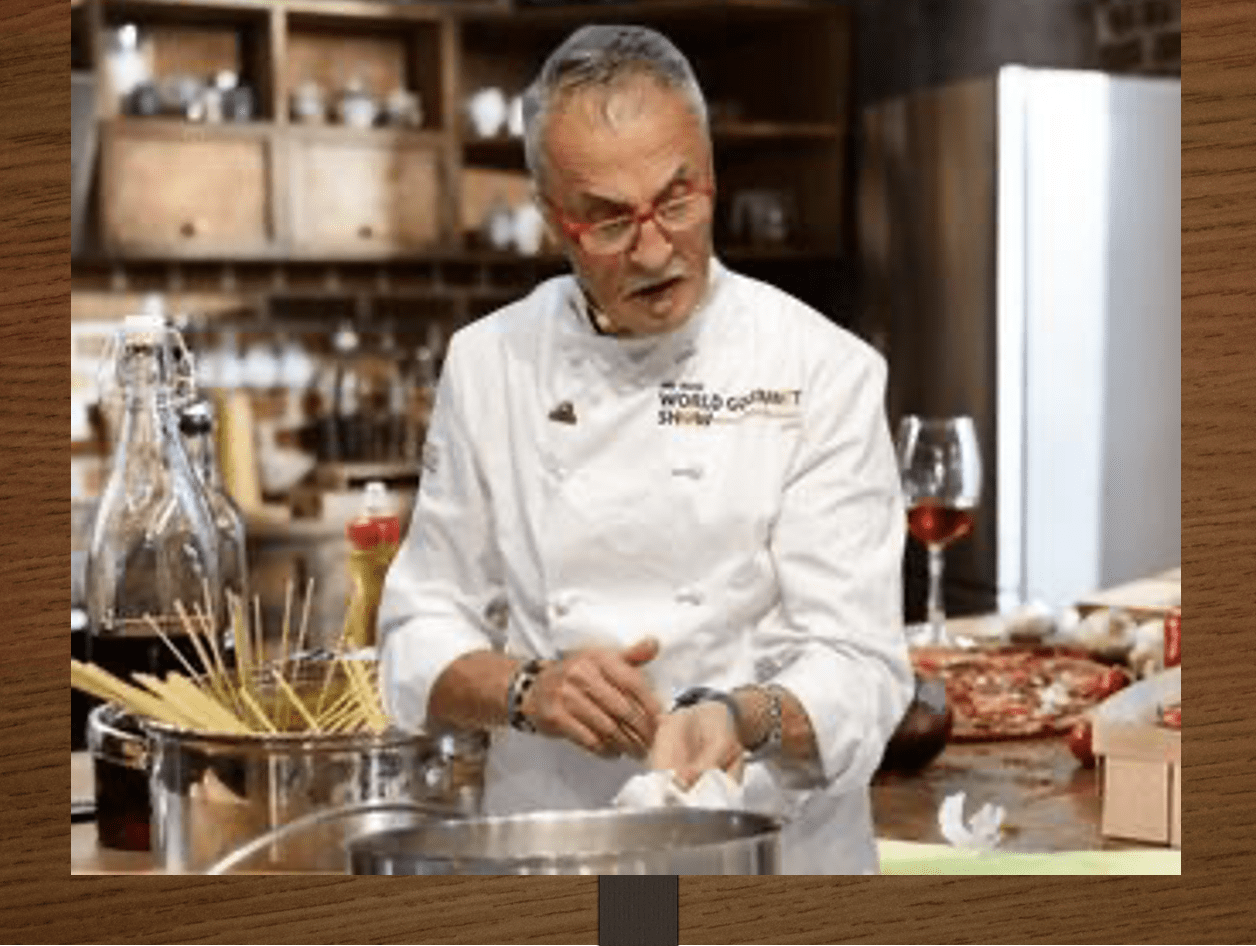
Meet Chef Walter!
There is a constant, recognizable thread in the career of Walter Potenza to elevate the level of Italian culinary culture in the United States. Besides his unquestionable culinary talent and winning business perspective, Chef Walter has been a relentless educator with passion and knowledge who defeats stereotypes. His life, career, and values are a model, an example to follow by any chef of Italian gastronomy working outside Italy.
Chef Walter appears regularly on National and International Networks such as Food Network, ABC, CBS, NBC, RAI, FOX, and Publications such as NY. Times, Washington Post, Wall Street Journal, Food & Wine, Saveur, Gourmet, and several Italian media outlets. And now – RINewsToday!

